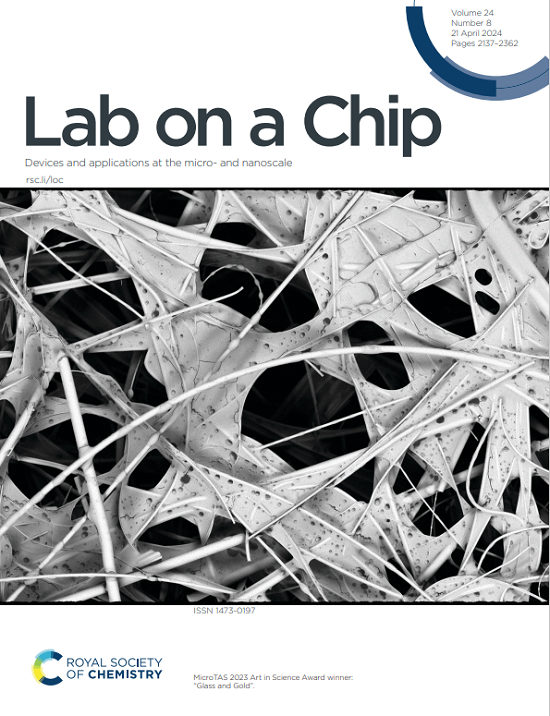Resonating with replicability: factors shaping assay yield and variability in microfluidics-integrated silicon photonic biosensors.
IF 5.4
2区 工程技术
Q1 BIOCHEMICAL RESEARCH METHODS
引用次数: 0
Abstract
The integration of biosensors and microfluidics has facilitated the development of compact analytical devices capable of performing automated and information-rich detection of myriad targets, both in the lab and at the point of need. However, optimization of microfluidics-integrated biosensor systems and replicability challenges present roadblocks in validation and commercialization. Understanding factors contributing to yield and replicability in biosensor performance is key to the development of biosensor optimization frameworks and technology translation beyond the research setting. Hence, for the first time, we present a detailed analysis of factors affecting performance, assay yield, and intra- and inter-assay replicability in microfluidics-integrated silicon photonic (SiP) evanescent-field microring resonator biosensors. Strategies for mitigating bubbles-a major operational hurdle and contributor to instability and variability in microfluidics-integrated biosensors-are analyzed to improve assay yield. Effective bubble mitigation is demonstrated by combining microfluidic device degassing, plasma treatment, and microchannel pre-wetting with surfactant solution. Both intrinsic and analyte-detection performance metrics and their replicability are quantified for the first time for sub-wavelength grating-based SiP biosensors, highlighting a path to further optimization. Lastly, the effects of sensor functionalization on analyte detection performance and replicability are evaluated. We compare polydopamine- vs. protein A-mediated bioreceptor immobilization chemistries and spotting- vs. flow-mediated bioreceptor patterning approaches. We find that simple polydopamine-mediated, spotting-based functionalization improves spike protein (1 μg mL-1) detection signal by 8.2× and 5.8× compared to polydopamine/flow and protein A/flow approaches, respectively, and yields an inter-assay coefficient of variability below the standard 20% threshold for immunoassay validation. Overall, this work proposes a practical framework through which evanescent-field SiP biosensors, and microfluidics-integrated biosensors more generally, can be characterized, compared, and optimized to facilitate efficient biosensor development.与可复制性共振:影响微流体集成硅光子生物传感器测定产率和变异性的因素。
生物传感器和微流体的集成促进了紧凑分析设备的发展,这些设备能够在实验室和需要的地方对无数目标进行自动化和信息丰富的检测。然而,微流体集成生物传感器系统的优化和可复制性挑战在验证和商业化方面存在障碍。了解生物传感器性能中影响产量和可复制性的因素是开发生物传感器优化框架和研究环境之外的技术转化的关键。因此,我们首次详细分析了影响微流控集成硅光子(SiP)倏逝场微环谐振器生物传感器性能、测定产率以及测定内和测定间可重复性的因素。减轻气泡的策略-一个主要的操作障碍和贡献者,微流体集成生物传感器的不稳定性和可变性-分析,以提高分析收率。将微流控装置脱气、等离子体处理和微通道预湿与表面活性剂溶液相结合,证明了气泡的有效缓解。本文首次对基于亚波长光栅的SiP生物传感器的内在和分析物检测性能指标及其可重复性进行了量化,强调了进一步优化的途径。最后,对传感器功能化对分析物检测性能和可重复性的影响进行了评估。我们比较了多多巴胺与蛋白a介导的生物受体固定化学和斑点与流动介导的生物受体模式方法。我们发现,与poly多巴胺/flow和protein A/flow方法相比,简单的聚多巴胺介导的、基于斑点的功能化方法分别将spike蛋白(1 μg mL-1)检测信号提高了8.2倍和5.8倍,并产生了低于免疫分析验证标准20%阈值的测定间变异性系数。总的来说,这项工作提出了一个实用的框架,通过该框架,可以表征、比较和优化微流控集成生物传感器,以促进高效的生物传感器开发。
本文章由计算机程序翻译,如有差异,请以英文原文为准。
求助全文
约1分钟内获得全文
求助全文
来源期刊

Lab on a Chip
工程技术-化学综合
CiteScore
11.10
自引率
8.20%
发文量
434
审稿时长
2.6 months
期刊介绍:
Lab on a Chip is the premiere journal that publishes cutting-edge research in the field of miniaturization. By their very nature, microfluidic/nanofluidic/miniaturized systems are at the intersection of disciplines, spanning fundamental research to high-end application, which is reflected by the broad readership of the journal. Lab on a Chip publishes two types of papers on original research: full-length research papers and communications. Papers should demonstrate innovations, which can come from technical advancements or applications addressing pressing needs in globally important areas. The journal also publishes Comments, Reviews, and Perspectives.
 求助内容:
求助内容: 应助结果提醒方式:
应助结果提醒方式:


